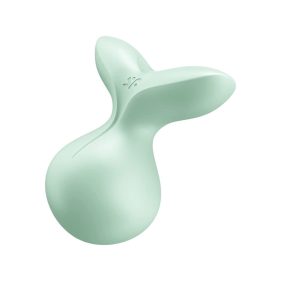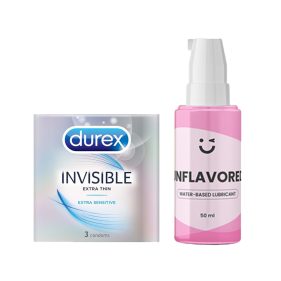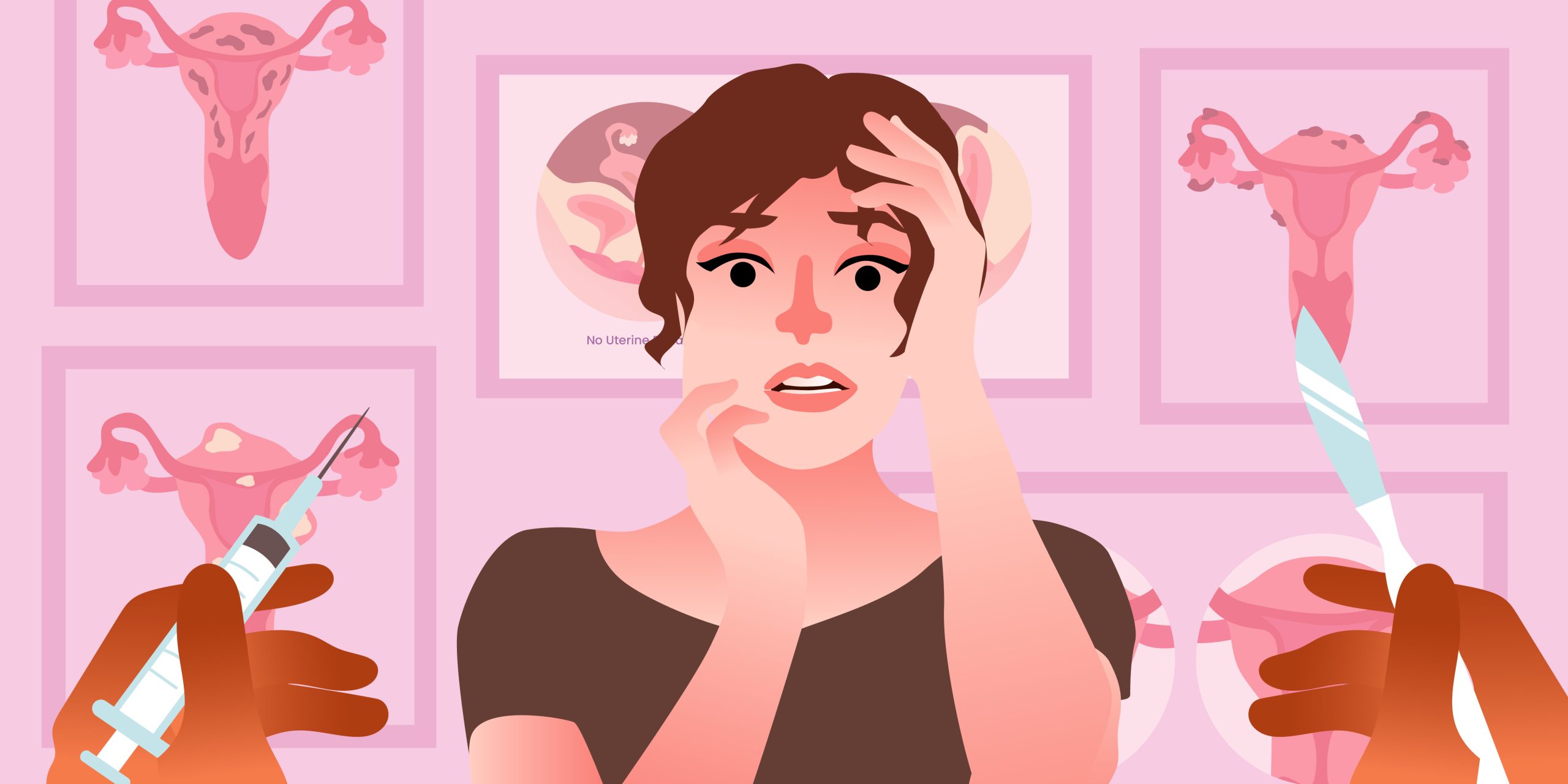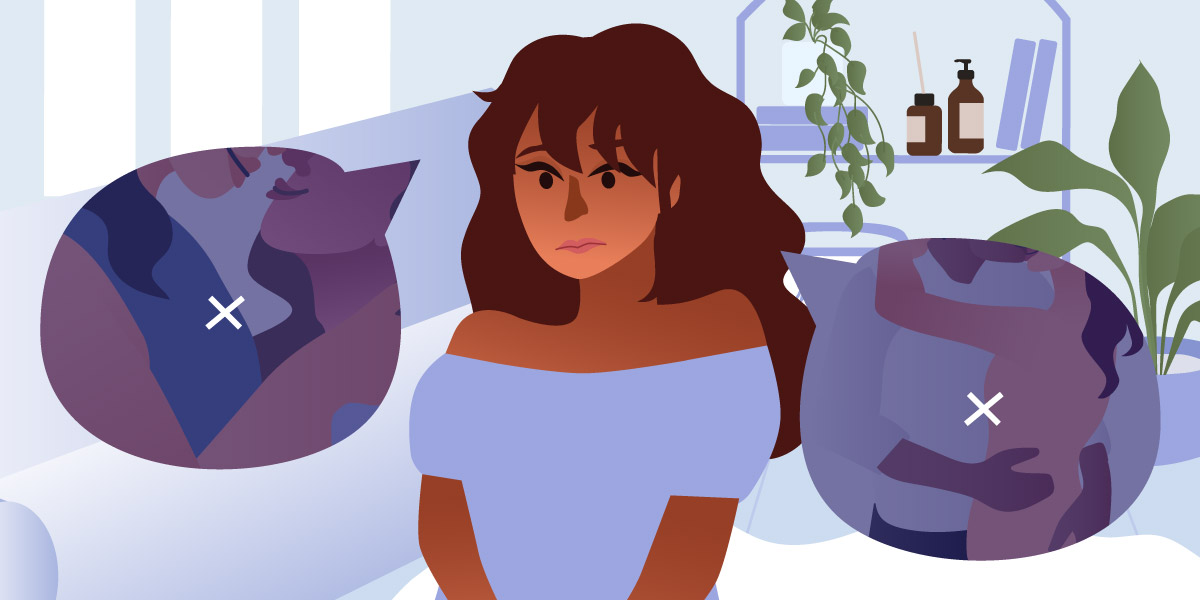
Disclaimer: This article on sexual aversion disorder is meant to be a source of valuable information for the reader. However, it is not a substitute for direct expert assistance. Consult your healthcare provider for further guidance.
Deflecting doing the deed with someone can occur several times to us for multiple reasons. It can be from not being in the mood to feeling nervous and anxious beforehand. Almost like experiencing possible sexual performance anxiety.
However, what if you’re avoidant of sex or anything related to it on an extreme level? Wherein you’ll do your best to consistently averse yourself from all sexual contact or anything related to sex?
Well, it’s quite possible that you may have this unique condition called sexual aversion disorder.
In this article, we’ll discuss this disorder in depth, including its cause and effects, possible treatment options, and various ways to manage it alone or with a partner.
What is Sexual Aversion Disorder?
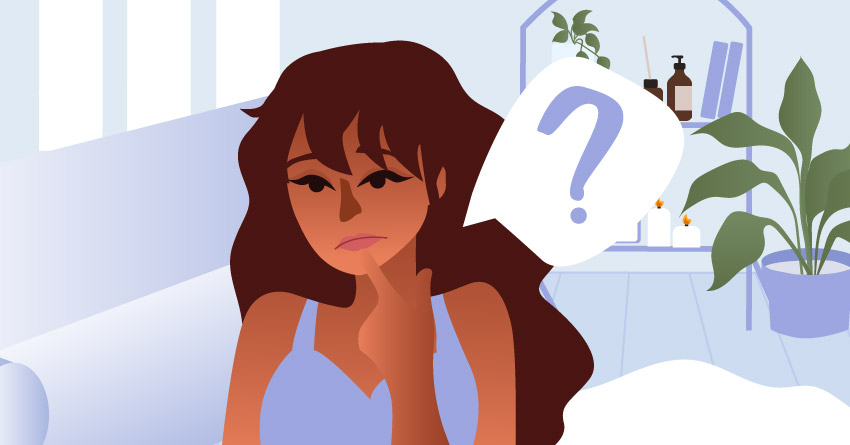
The Diagnostic and Statistical Manual of Mental Disorders (DSM) once defined this condition as the “persistent or recurrent extreme aversion to, and avoidance of, all or almost all, genital sexual contact with a sexual partner”.
Ways this disorder may manifest are through avoiding any kind of penetration, disliking a certain part of the deed (e.g., foreplay, getting naked, seeing intimate body parts, etc.), or encountering any erogenous body part or secretions. Even going as far as not wanting any kind of non-sexual physical contact around your partner showcases this disorder.
However, this disorder was then removed from the DSM-5 due to the lack of sufficient research and usage surrounding it. Moreover, Choosing Therapy cites that this condition is now a diagnosis of a sexual dysfunction. One wherein someone completely avoids all kinds of sexual contact.
In addition to this, it makes it harder for people who have this condition to talk about it because it’s something private to them. Hence, it goes unexamined.
But mind you, having this condition doesn’t mean someone doesn’t experience arousal or have sexual fantasies. It’s quite the opposite, actually. It’s doing the action that makes them causes them distress rather than musing over their desires.
-
₱2,695.00
-
₱4,045.00
-
₱4,745.00
-
₱4,745.00
Types of Sexual Aversion Disorder
There are two known types of sexual aversion disorder to look out for.
1 Lifelong
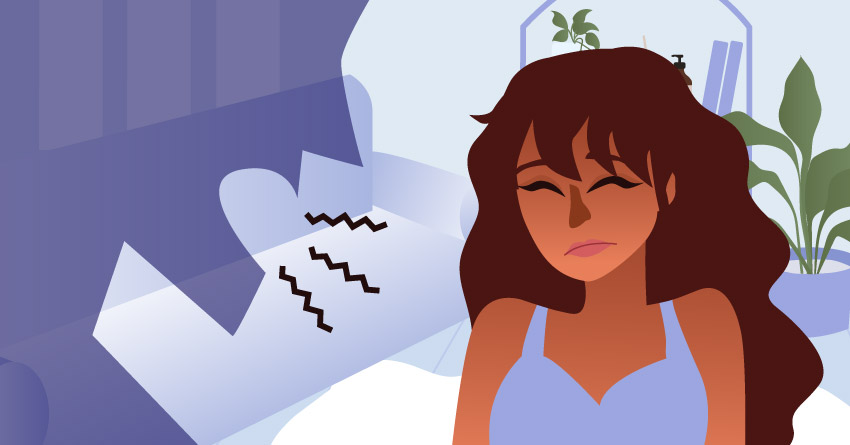
This type occurs when the person gains a negative reaction toward any sexual contact or interaction before experiencing sexual activities themselves. For example, growing up in a strict, authoritative environment hinders you from exploring your sex life. Also having strong religious beliefs that value the importance of chastity and the like embraces being conservative and traditional.
2 Acquired
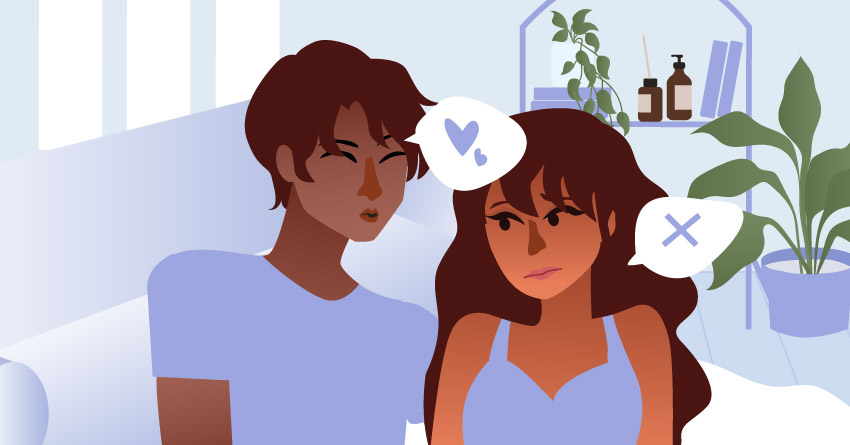
This type stems from having a negative sexual experience after having a strong run of healthy sexual encounters firsthand. Examples of negative sexual experiences can be abuse, violence, or assault, which leads to trauma.
The acquired type of sexual aversion disorder can also present itself in a specific relationship. But outside of it, the person can function and continue on with their normal, daily life.
-
₱1,894.00
-
₱1,694.00
-
₱1,844.00
-
₱1,894.00
Causes of Sexual Aversion Disorder
Unravel the possible ways for sexual aversion disorder to occur in someone’s life in this section.
Trigger Warning: Mentions of sexual abuse, rape, and violence are evident here. Read at your own risk.
1 Negative Sexual Experiences
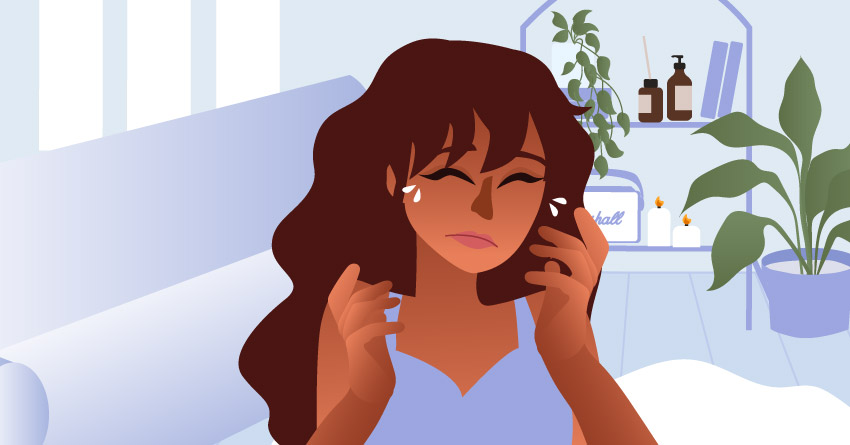
This cause can go in various ways. For one, it can be from getting with someone who doesn’t know how to please, only wasting your time as a result. It can also be seeing unsolicited pictures of genitalia online. Or on a more serious level, sexual abuse, assault, violence, harassment, and rape strongly impacted the way you view sex and yourself as well.
2 History of Sexual Trauma
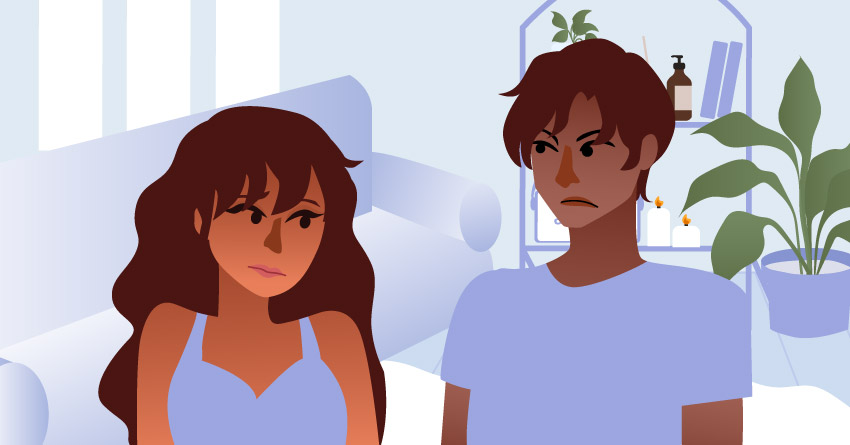
Linked to the previous point, having such terrible sexual experiences or maybe experienced a toxic relationship can lead to a build-up of sexual trauma. Especially when you were violated and taken advantage of without any consent, straying away from any sexual contact is the automatic protective response. That way, you don’t relive those violating encounters again. It also helps to keep an eye out for strong red flags.
3 Your External Surroundings and Upbringing
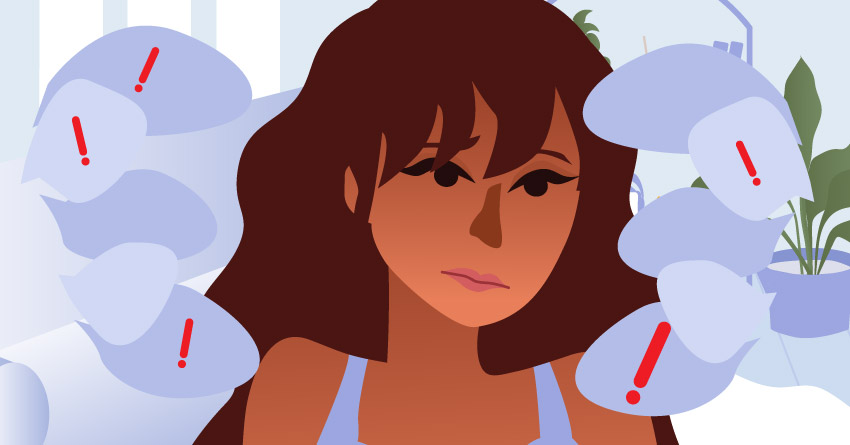
What we’re surrounded with and how we are raised has a strong influence on how we live our lives. If you grew up in a house with strong religious or conservative views, touchy topics such as sex aren’t entertained nor discussed. It builds stigma and disinterest in your mindset, leading to a very pessimistic image of such growing up.
-
₱1,794.00
-
₱1,794.00
-
₱1,894.00
-
₱1,594.00
4 Sexual Performance Anxiety
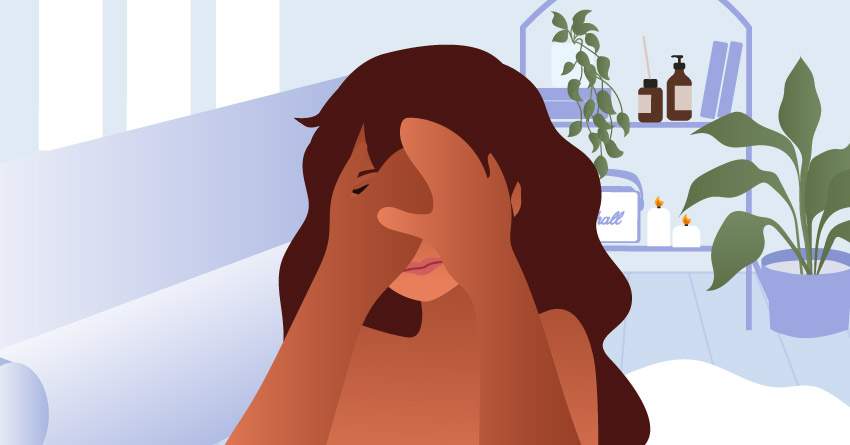
Although there’s a prevalence of this in men, women can also feel such a way. Afraid of rejection and disappointment, someone with sexual performance anxiety is more likely to avoid relationships. And on top of that, they’d feel more okay with ignoring doing anything sexual with anyone.
-
₱2,695.00
-
₱4,045.00
-
₱3,395.00
-
Original price was: ₱6,598.00.₱3,299.00Current price is: ₱3,299.00.
5 Previously Diagnosed Conditions
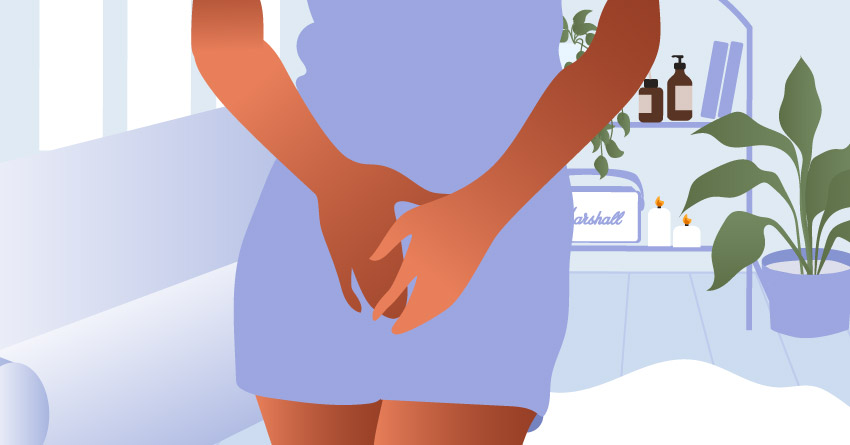
Being diagnosed with any kind of disease (e.g. cancer, diabetes, etc.) beforehand can hinder someone from engaging in the deed. Due to any physical or mental changes that may have affected their sexual function, they don’t feel comfortable getting involved in anything sexual.
-
₱12,245.00
-
₱12,645.00
-
₱3,485.00
-
₱3,845.00
Signs and Symptoms of Sexual Aversion Disorder
From knowing where this condition stems from, you’re now wondering: what are some evident hints and indications of someone with this condition? Well, let’s break down the most common signs and symptoms of sexual aversion disorder to look out for.
1 They avoid sex.
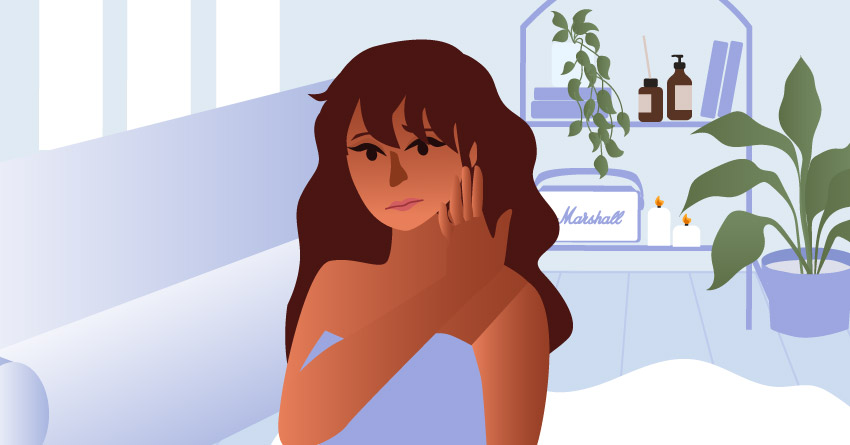
The biggest one really! Any type of sexual activity that comes up to the surface can bring panic and anxiety to them. Thus, they’ll find a way to run away before things get worse for them. In addition, any kind of avoidant behaviors are linked to extreme anxiety and depression. Thus, it’s highly possible for one to have any of these conditions alongside sexual aversion disorder.
2 They also avoid anything sex-related.
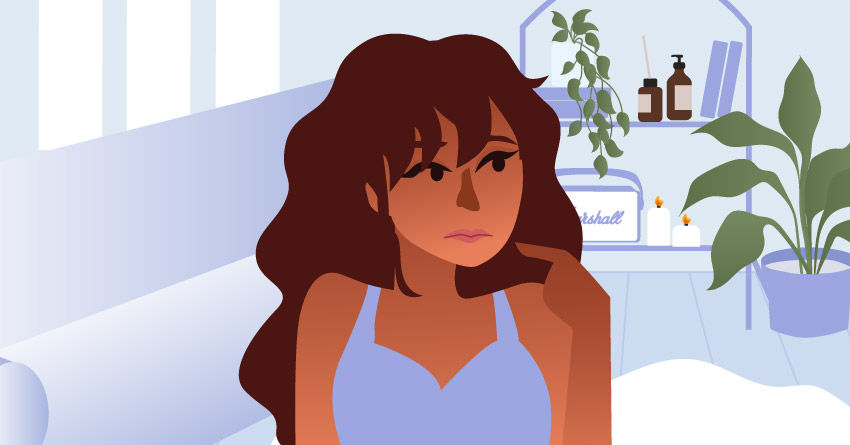
Not just sex itself, someone with sexual aversion disorder ignores and shuts down anything under the umbrella of sex. Whether it be discharges released from either penis or vagina, even the body parts itself, or getting too close sexually with someone, they don’t want to be around it.
3 You have a strained sex life.
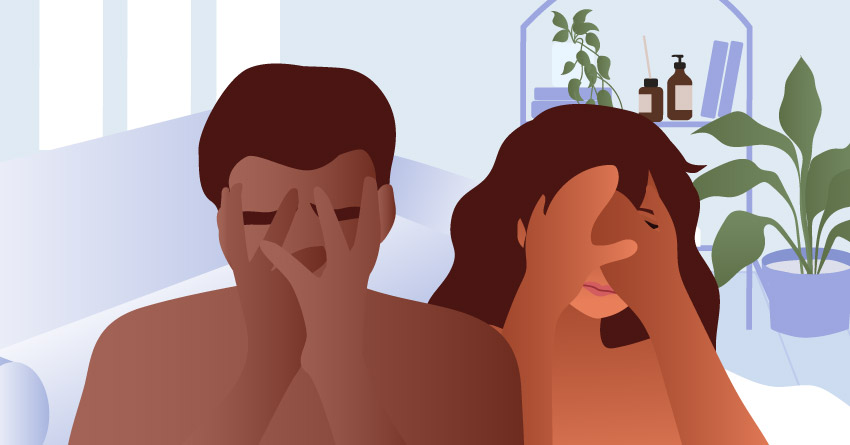
This sign is highly evident when you’re in a relationship with someone. In a romantic relationship, sex usually plays a strong factor as it encourages intimacy, connection, and passion with one another. However, with this condition, you don’t want to engage in the deed or anything related to it. Due to your fears and such, you wouldn’t want to force yourself to do something you’re uncomfortable.
Thus, it causes strain and dissatisfaction in your sex life. And if you have a partner, such strain may negatively affect your relationship and bond due to the lack of attention towards it.
-
₱1,794.00
-
₱1,894.00
-
₱1,844.00
-
₱1,894.00
Effects of Sexual Aversion Disorder
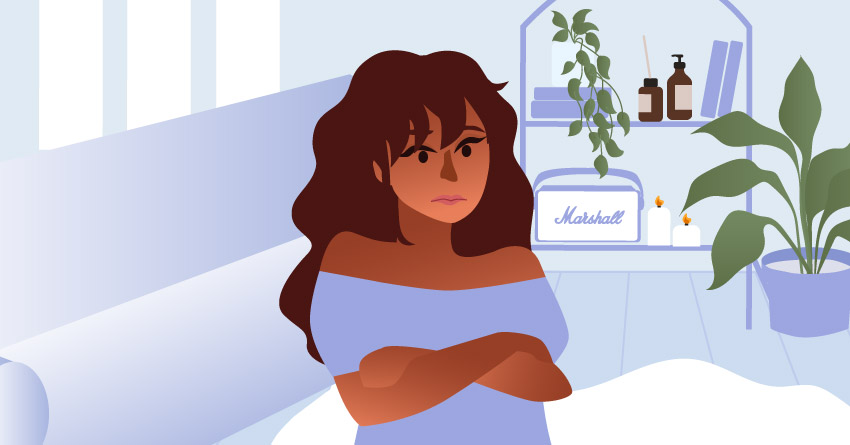
Due to such strong avoidance towards sex or anything linked to it, there are numerous ways it can affect someone with the condition.
Some effects include:
- Sexual Anxiety
- Panic Attacks
- PTSD (in rare cases when someone gains aversion from a traumatic sexual encounter)
- Power struggles within a relationship
- Strained sexual relations with anyone
-
₱2,695.00
-
₱2,345.00
-
₱3,395.00
-
₱3,395.00
How to Manage Sexual Aversion Disorder
If you have this challenging condition, continue reading this section on how to overcome its challenges moving forward.
1 Learn your triggers.

Getting Sex Avoidant? Let’s Talk About Sexual Aversion Disorder
What about sex or anything under its umbrella that frightens you? Get clear as you determine what those triggers are, even if it can feel challenging and intimidating. That way, you have a more vivid idea of what to stay away from and eventually work towards overcoming it over time.
2 Practice grounding techniques.
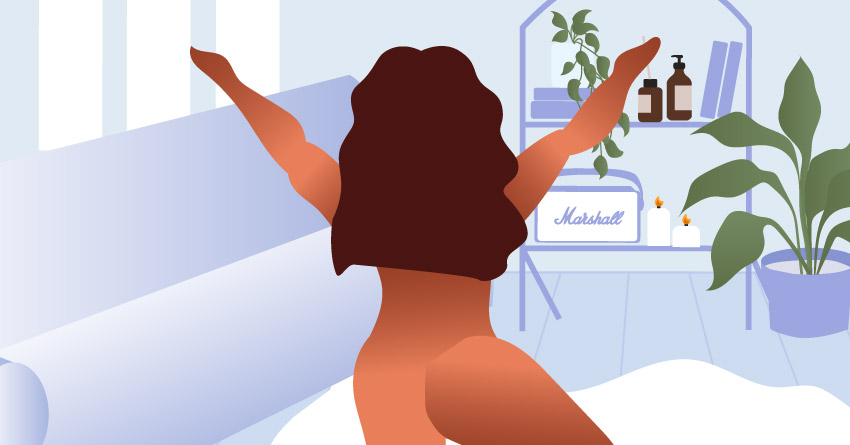
Grounding techniques such as breathing exercises and mindfulness allow you to focus on the present. The former can also release any pent-up stress in your system that you haven’t released.
3 Seek professional treatment.

It’s advisable and effective to add any of these tips mentioned above as new daily habits and practices to apply in your life. However, it’s always important to consider your overall health by getting medical help. Especially if you have the means to do so, we highly recommend seeing a medical professional who can help navigate sexual aversion disorder. We’ll get a little more depth with this in the new few sections.
-
₱4,745.00
-
Original price was: ₱4,745.00.₱4,270.50Current price is: ₱4,270.50.
-
₱4,745.00
-
₱4,745.00
How to Be Supportive If Your Partner Has Sexual Aversion Disorder
It’s tough to watch your partner go through such a condition like this one. The most natural thing for you to do is to help them out. In this section, we’ll list down a few ways you can be their trusted support system during this time more than ever.
1 Be patient with them.
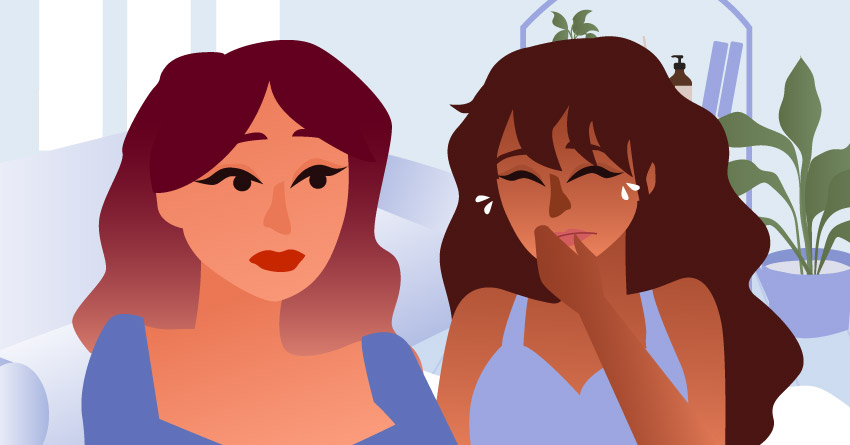
Someone with sexual aversion disorder is afraid to get sexual for varying reasons. Not just that, they may already feel alienated from those who view sex in a healthy way. Thus, try to understand where they are coming from whether it be from a negative sexual experience, any diagnosis of anxiety or panic disorders, or their upbringing.
Listen to them whenever they feel brave to share new aspects of themselves. Speak to them kindly and warmly. Overall, be someone they can trust and feel free to open up to you.
2 Respect their boundaries.

This tip is extra important! Someone with sexual aversion disorders sets boundaries that protect them from getting hurt in any way, shape, or form. It’s not something to take offense with. Once you’re aware of those boundaries, do your work around them and avoid crossing them too.
3 Seek professional treatment together.
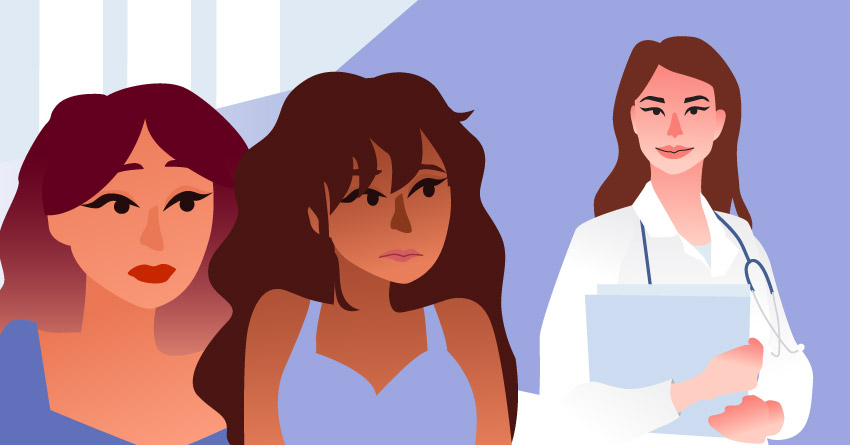
If your partner feels hesitant or daunted to seek help alone, join them. Moreover, you can both give couples therapy a try to learn more about the condition and encourage open discussion and communication with one another.
4 Be there for them.
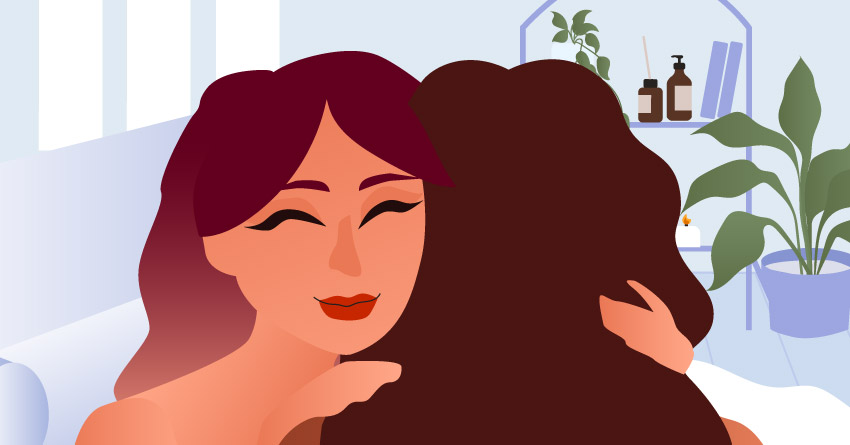
More than ever, be the person they can feel at ease with. That way, you both can control and maintain harmony within your relationship.
5 Explore more alternatives to intimacy.

Sex isn’t the only way to be intimate with your partner.
So once you know your partner’s sex-related triggers are in line with sexual aversion disorder, it shall be easier to navigate and uncover new ways to bond. By having such knowledge, it reaffirms your trust in one another and connects the both of you in such profound ways. It may just create a bond that won’t be wavered by such a condition.
Treatment Options for Sexual Aversion Disorder
Explore the following treatment procedures you can go through when you have this condition in this informative section.
1 Systematic Desensitization
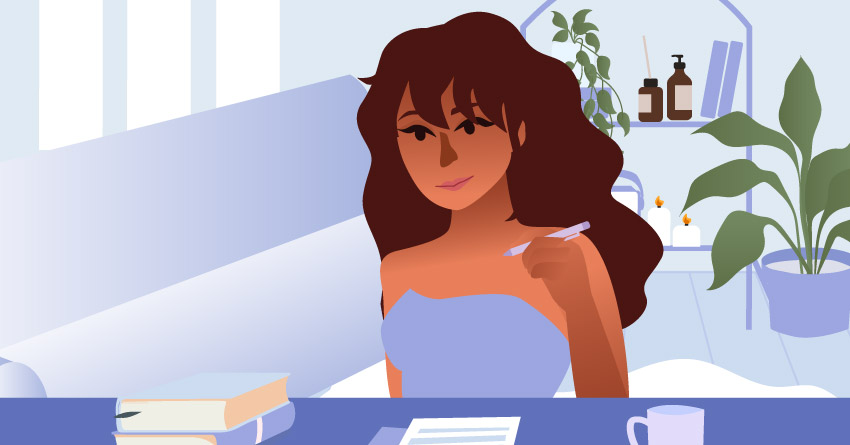
Verywell Mind defines systematic desensitization as a treatment technique that involves “working with a therapist to create a list of sexual activities, with each one causing increasing levels of anxiety.”
From there, you’d be exposed to them while going through guided relaxation exercises (e.g., deep breathing, visualization, deep muscle relaxation) with your therapist. The goal here is to reduce heavy anxiety by a particular stimulus until moving to the next one in the succeeding sessions.
This method is also commonly known to be one of the treatments for anxiety or panic-related disorders.
2 Cognitive Behavioral Therapy (CBT)

This kind of treatment focuses on shifting and confronting cynical beliefs and thoughts and their correlated behaviors to them. In this case, we’re challenging our fears of sex-related aspects and our aversion to them. That way, we can handle our emotions on a more mature level and have healthy coping mechanisms towards our anxieties.
3 Couples Therapy
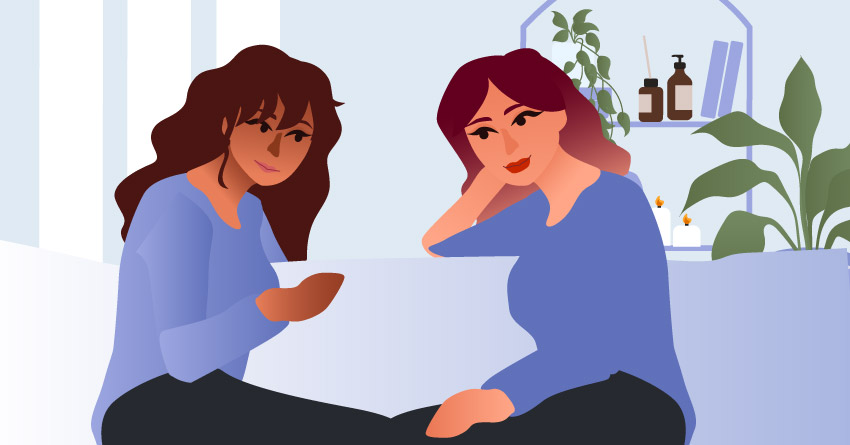
Going through such therapy can aid the two of you in openly addressing your concerns related to sexual aversion. By strengthening your communication and negotiation skills, you’ll both be able to improve your relationship.
4 Medication
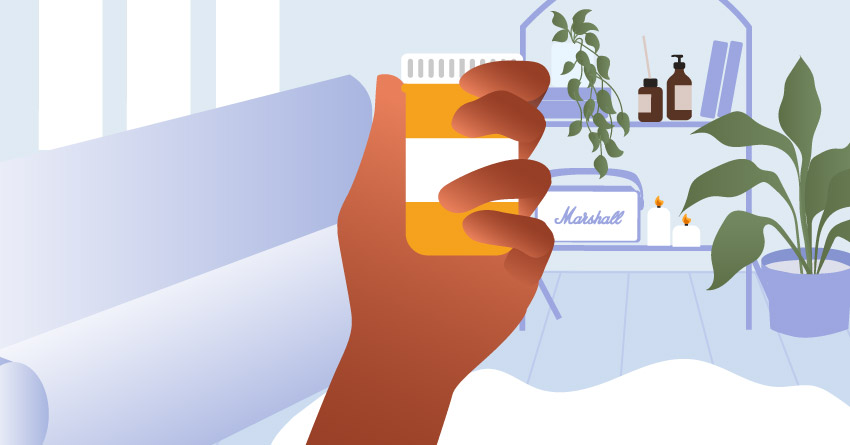
Aside from therapy, taking medication is advisable when you have sexual aversion disorder. In most cases, the medications given are the frequently prescribed ones for those who have anxiety-related conditions.
This going hand in hand with therapy can make it easier for one to manage such a disorder.
-
₱150.00
-
₱150.00
Takeaway
Sexual aversion disorder feels like a challenge that is big and difficult to overcome. Especially when it’s not discussed or researched as much, you may feel alone in this journey. However, by having a healthy support system and bravely seeking proper treatment, it is possible to cope with its symptoms and live a much more peaceful life. Alongside that, you may gain a better, healthier view of sex over time and create more meaningful sexual relations and experiences too.

